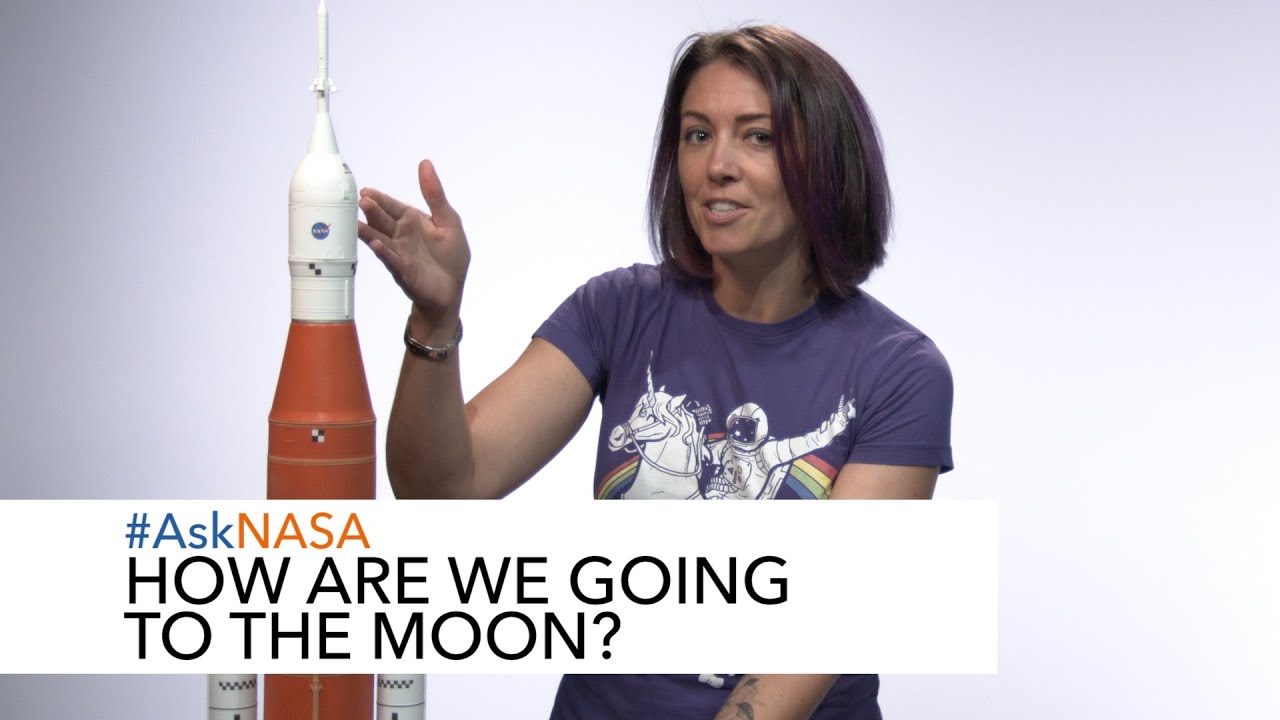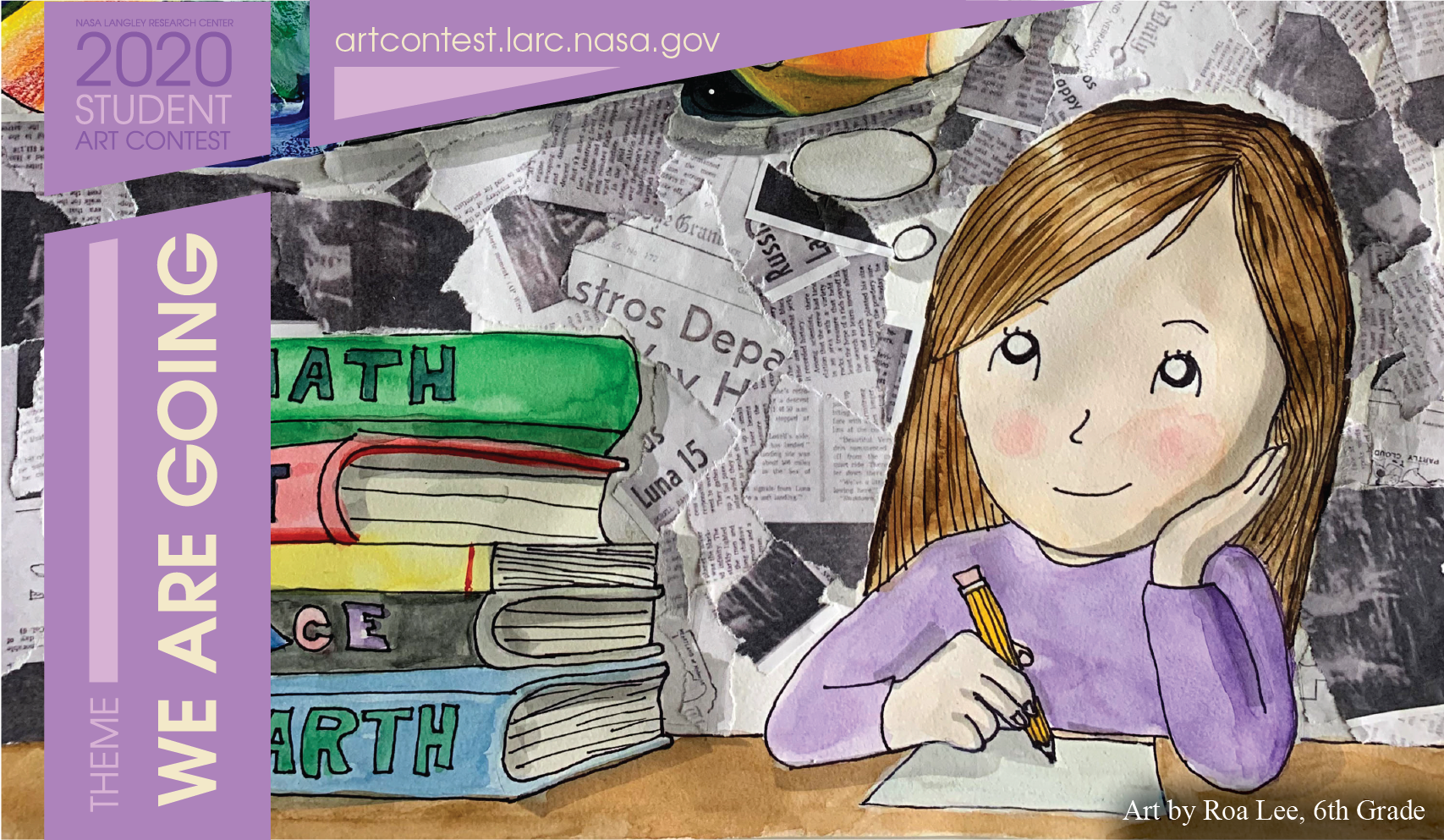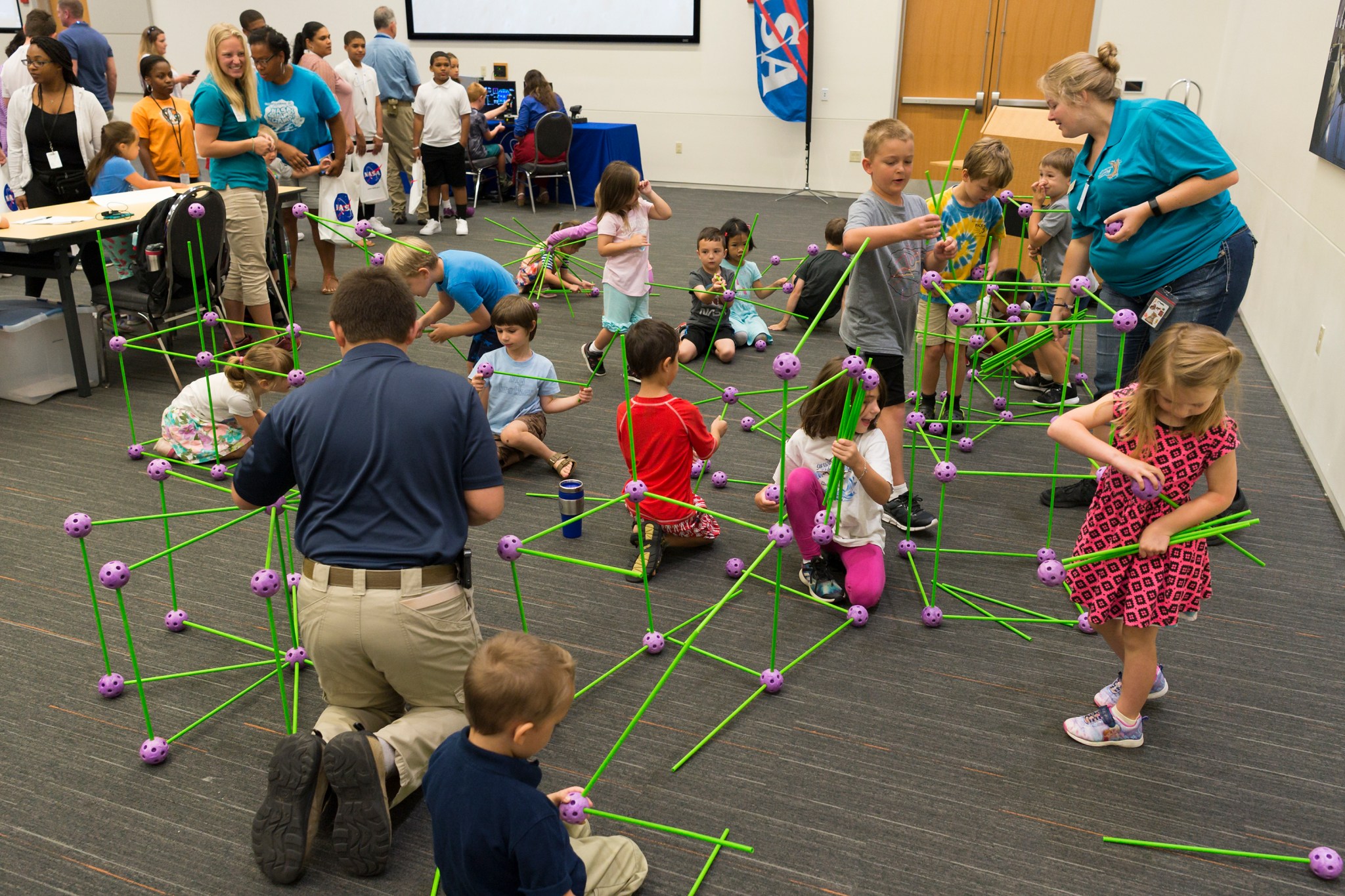National STEM Day is November 8 and the unofficial holiday celebrates science, technology, engineering and mathematics (STEM) education throughout the United States. The day focuses on helping students advance in STEM fields, a priority of NASA as we continue to push the boundaries of exploration and soar into the future. In celebration of National STEM Day, we challenge you to engage and inspire the Artemis generation as we go forward to the Moon by 2024 and continue to innovate in the areas of Earth science and aeronautics. To help you join in on the festivities, here are 10 ways you can celebrate National STEM Day with us.
1. Learn About the Artemis Program
Artemis is our program to put the first woman and next man on the Moon by 2024. We will use innovative new technologies and partners from around the world to establish a sustainable lunar presence by 2028. Then, after exploring more of the Moon more than ever before, we will use what we learned there to send astronauts to Mars. Learn how we’re taking the next giant leap → http://nasa.gov/artemis
2. #AskNASA a Question on Social Media
You could be featured in a video by NASA – well, your question, that is. Head over to Twitter and ask us about our space, aeronautics and Earth science exploration goals. All you have to do is type your question using the hashtag #AskNASA and selected questions will be featured on our new series, fittingly called, ‘#AskNASA.’ During each episode, NASA experts answer your questions from social media. Watch #AskNASA here → http://bit.ly/2Njtgld
3. Observe Clouds for the Fall Cloud Challenge
For the second year in a row, NASA and The GLOBE Program are asking citizen scientists to take out their phones and report what kinds of clouds they see. The challenge started October 15, but it runs through November 15 so there’s still time to participate. Citizen scientists young, old and in-between can submit up to 10 cloud observations per day using the GLOBE Observer app or one of GLOBE’s other data entry options (for trained members). Participants with the most observations will receive a personalized thank you from a NASA scientist. Get the app and start observing → https://go.nasa.gov/2owTGGl
4. Visit a NASA Visitor Center or Air & Space Museum
The 14 NASA visitor centers offer a unique look at NASA history through interactive exhibits and presentations. A few current exhibitions include Space Shuttle Atlantis at NASA’s Kennedy Space Center, a real Moon rock at NASA’s Ames Research Center in Silicon Valley, California, and the Apollo 12 capsule at the Virginia Air & Space Center in Hampton, Virginia, the visitors center of NASA’s Langley Research Center. Admission prices vary. Find a NASA visitor center or air and space museum near you → http://www.visitnasa.com
5. Fly the X-59 From Your Laptop
Interns from three NASA centers spent their summer competing to develop a laptop flight simulator of the X-59 Quiet SuperSonic Technology or “QueSST” aircraft. The X-59 is an experimental supersonic aircraft currently under construction and will fly for the first time in 2021. Now, those laptop simulations are available to the public for free and allow people to fly the X-59 from home.
Get the instructions and simulations for free here → Instructions for Downloading and Flying all Three X-59 Laptop Flight Simulation Models
6. Enter the 2020 NASA Art Contest
NASA’s inviting grades K-12 to creatively visualize NASA’s science, technology and human exploration activities in the 2020 NASA Art Contest, using the theme “We Are Going.” The contest is open to all children grades K-12 attending public, private, parochial and homeschools who are residents of the United States, including children of military members stationed overseas. This year’s art contest celebrates the Artemis Program, NASA’s mission to land the first woman and next man on the Moon by 2024. The Art Contest submission period begins Dec. 1, 2019 and concludes on Dec. 31, 2019 at midnight EST. For more information on the 2020 NASA Art Contest, visit → https://go.nasa.gov/2VqGEXd
7. Find Out How to Become a NASA Intern
NASA offers internships and fellowships focusing primarily in science, technology, engineering and math. Internships are available from high school to graduate level and provide students with the opportunity to participate in either research or other experiential learning, under the guidance of a mentor at NASA. More info → https://intern.nasa.gov/
8. Discover How NASA’s with You in Your Everyday Life
Have you ever wondered how space exploration and research impact your daily life? NASA Home & City is an interactive way to learn about NASA spinoff technologies that impact you. A spinoff is a commercial product that applies NASA technology originally developed for exploring space. The website includes about 130 spinoffs to explore through a virtual space that you would see in your home or city. Learn how NASA is with you → https://homeandcity.nasa.gov/
9. Download Posters and Classroom Lessons
Bring the wonder of exploration to your students by checking out STEM resources for kids of all ages. Each NASA center offers a wide variety of STEM-education workshops and professional development for educators of all types. Find out about the latest rover challenge, join the NASA Kids’ Club, browse resources by grade-level and much more here → https://www.nasa.gov/stem/
10. Watch NASA STEM Engagement Videos
Spend today watching compelling and exciting videos about how NASA invests in U.S. education programs and supports the country’s educators to nurture young minds. Videos include ISS Downlinks, Virtual Career Fairs, interviews with NASA employees and interns, as well as STEM activities and NASA news → http://bit.ly/36y9XfJ
































